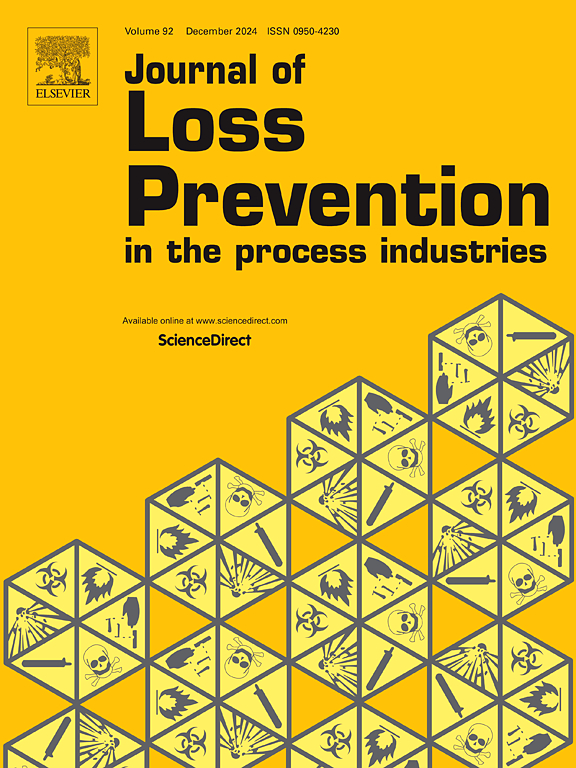利用机器学习模拟注入井和地面设施的二氧化碳泄漏和分散
IF 4.2
3区 工程技术
Q2 ENGINEERING, CHEMICAL
Journal of Loss Prevention in The Process Industries
Pub Date : 2025-06-13
DOI:10.1016/j.jlp.2025.105709
引用次数: 0
摘要
该研究提出了一种新的基于机器学习的方法,用于实时预测注入井和地面设施的二氧化碳泄漏和分散。在最坏情况下,使用PHAST模拟生成了一个全面的数据集,具体针对两个关键二氧化碳浓度阈值,30,000 ppm (ACGIH STEL)和40,000 ppm (IDLH)。系统地改变关键操作参数,包括工作温度(0-100°C)、工作压力(1 - 250 bar)和泄漏直径(1 - 12英寸),同时保持其他参数固定在保守值,并考虑两种大气稳定性等级(F和D),分别具有相应的地面风速(1.5 m s - 1和5 m s - 1)。在该高保真数据集上训练了多个机器学习模型,并对模型性能进行了评估。人工神经网络(ANN)模型表现最好,以最小的误差实现了很高的预测精度(测试数据上R2≈0.9996)。广泛的诊断分析,包括残差、累积误差和杠杆评估,证实了模型的稳健性和泛化性。最终的预测模型集成到交互式应用程序中,实现了快速的危害评估,与传统的计算流体动力学(CFD)方法相比,显著降低了计算成本。这项工作为加强二氧化碳密集型工业环境中的应急响应和过程安全提供了一个可扩展的框架。本文章由计算机程序翻译,如有差异,请以英文原文为准。
Modeling CO2 leak and dispersion from injection wells and surface facilities using machine learning
This study presents a novel machine learning–based approach for real-time predictions of CO2 leak and dispersion from injection wells and surface facilities. A comprehensive dataset was generated using PHAST simulations under worst-case scenarios, specifically targeting two critical CO2 concentration thresholds, 30,000 ppm (ACGIH STEL) and 40,000 ppm (IDLH). Key operational parameters, including operating temperature (0–100 °C), operating pressure (1–250 bar), and leak diameter (1–12 inches), were systematically varied while maintaining other parameters fixed at conservative values, and considering two atmospheric stability classes (F and D) with corresponding surface wind speeds (1.5 m s−1 and 5 m s−1) respectively. Multiple machine learning models were trained on this high-fidelity dataset, and the model performances were evaluated. The Artificial Neural Network (ANN) model emerged as the top performer, achieving high predictive accuracy (R2 ≈ 0.9996 on test data) with minimal error. Extensive diagnostic analyses, including residual, cumulative error, and leverage evaluations, confirmed the model's robustness and generalizability. The final predictive model was integrated into an interactive application, enabling rapid hazard assessment, and offering a significant reduction in computational cost compared to traditional Computational Fluid Dynamics (CFD) methods. This work provides a scalable framework for enhancing emergency response and process safety in CO2-intensive industrial environments.
求助全文
通过发布文献求助,成功后即可免费获取论文全文。
去求助
来源期刊
CiteScore
7.20
自引率
14.30%
发文量
226
审稿时长
52 days
期刊介绍:
The broad scope of the journal is process safety. Process safety is defined as the prevention and mitigation of process-related injuries and damage arising from process incidents involving fire, explosion and toxic release. Such undesired events occur in the process industries during the use, storage, manufacture, handling, and transportation of highly hazardous chemicals.

 求助内容:
求助内容: 应助结果提醒方式:
应助结果提醒方式:


